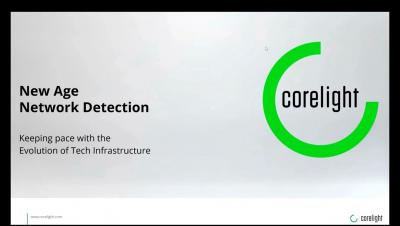Security | Threat Detection | Cyberattacks | DevSecOps | Compliance
Corelight
Acting on CISA's advice for detecting Russian cyberattacks
Given that active cyber warfare has broken out alongside Russia’s active invasion of Ukraine - from Russian wiper malware to Anonymous hacking Russian state TV - CISA’s recent “Shields Up” memo is a timely insight into some of the TTPs defenders of critical infrastructure should be keeping an eye out for. Let’s break down the four key areas outlined in the memo and examine ways they can be detected with network data.
Thinking Like a Threat Actor: Hunting the Ghost in the Machine
Application Layer Infrastructure Visibility in IaaS
The migration to cloud provides faster time to deployment and elasticity, but often at some cost and complexity to infrastructure control and visibility. A concrete example we can use is a deployment of web servers with rational security group configuration, in light of the recent Log4Shell vulnerability. While limitations are similar in all IaaS environments, consider the following AWS architecture with focus on the web servers running on EC2 instances.
Securosis Webinar New Age Network Detection
XDR: The Importance of Network Technology
Government gets serious: deadlines for Zero Trust Architectures
Since the 1990s, the federal government has been issuing guidelines and recommendations for security via their 800-Series Special Publications. While some of those guidelines became mandates, things have largely inched forward, instead of making any dramatic leaps. OMB’s new memorandum M-22-09, “Moving the U.S. Government Towards Zero Trust Cybersecurity Principles,” is changing this pattern, and setting deadlines for implementation across the government.
Detecting CVE-2022-21907, an IIS HTTP Remote Code Execution vulnerability
In January 2022, Microsoft disclosed a remote code execution vulnerability for Internet Information Server (IIS) identified as CVE-2022-21907, which they have subsequently reported as wormable. Through Microsoft, Corelight Labs was able to review a proof of concept for an attack against the vulnerability. This blog presents an open source detection method that Corelight Labs is releasing to detect exploit attempts of CVE-2022-21907.
Security strategy for the next Log4Shell
Last week I had the privilege to be in Washington, DC talking to a group of defenders. I heard a clear pattern of words: “data-driven,” “telemetry-first,” and “visibility”.
Detecting Log4j exploits via Zeek when Java downloads Java
We have published an initial blog on the Log4j exploit and a followup blog with a second detection method for detecting the first stage of exploits occurring over LDAP. Today, we will discuss a third detection method, this one focused on the second-stage download that happens after the first stage completes. In this case, the JVM will download additional Java code payloads over HTTP.







